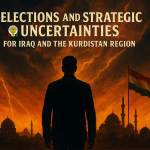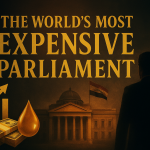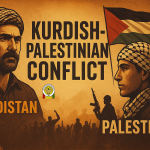The Political Storm Before the Ballot
Iraq is once again bracing for elections amid a storm of rhetoric and strategic confusion. Former Prime Minister Nouri al-Maliki has warned that boycotting the vote means “surrendering to Satan.” Hadi al-Amiri calls it a “war of survival,” while Qais al-Khazzali warns of “dangerous projects for Iraq.” In contrast, Muqtada al-Sadr is urging a boycott, and Prime Minister Mohammed Shia al-Sudani is asking voters to let him “finish his half-baked work.”
Every slogan, every soundbite has one goal — to bring people to the polls. Yet the deeper issue is that Iraq is heading toward elections in a state of strategic uncertainty. The coming year will determine whether the country stabilizes or slips into a new phase of turmoil.
Iraq’s Future at a Crossroads
In the short term, the next twelve months will test Iraq’s resilience. Can it resist the aftershocks of regional conflicts, or will those tensions spill inward after the elections? The answer will shape not just Baghdad’s domestic politics but its regional posture for years to come.
The “Iraq First” Doctrine: Between Idealism and Reality
Sudani’s “Iraq First” slogan, echoing Trump’s nationalist mantra, is an attempt to portray Iraq as neutral in regional rivalries. The Prime Minister recently claimed he had stopped 29 attempted drone and missile attacks on Israel during the recent 12-day war.
But this neutrality may be an illusion. Keeping Iraq out of the conflict was less a domestic triumph and more the product of U.S.–Iran coordination. Neither side wants Iraq as a battlefield, yet its geography makes it central to both. Israel views it as airspace for operations; Iran as a potential missile launch zone. For the next prime minister, that balancing act will only get harder.
Sanctions, Strategy, and Iran’s Shifting Priorities
The reinstatement of six UN Security Council sanctions on Iran signals renewed economic pressure: restricted oil sales, blocked access to dollars, and limits on arms deals. Surrounded by instability — the Taliban to the east and Azerbaijan to the north — oil-rich Iraq becomes ever more crucial to Tehran.
Washington, however, is watching closely. Recent U.S. sanctions on Iraqi bankers accused of aiding Iran show that Baghdad itself is becoming a proxy front in the larger economic war. Despite pressure, Iran sees Iraq as both an economic lifeline and a strategic transit zone in its partnerships with China and Russia.
Tehran’s New Power Line: Hardliners in Command
Post-war Iran is consolidating under a harder ideological line. Supreme Leader Ali Khamenei’s dismissal of dialogue with Washington — and the appointments of Ali Larijani, Ali Shamkhani, and Saeed Jalili to top security roles — mark a shift toward ultra-conservative control.
Larijani’s background is revealing: former IRGC commander, born in Najaf, and architect of Iran’s long-term deals with China and Russia. His first foreign visits after his appointment were to Iraq and Lebanon, highlighting their priority in Iran’s new regional playbook.
At the same time, Iran’s military strategy seems to be turning toward land and naval power, reducing dependence on aerial or missile escalation. In this framework, Iraq and the Kurdistan Region become central staging grounds for Iran’s deterrence and influence network.
U.S. Troop Movements and the Shadow of ISIS
Since September, the United States has rotated its forces northward to the Kurdistan Region, a move that strengthens Sudani’s political standing while giving Iranian-aligned groups more freedom in southern Iraq. Washington insists this is part of a “responsible transition,” avoiding the chaos of its Afghan withdrawal.
However, the shift raises fears of a new Sunni resurgence or ISIS revival. With an estimated 1,500 ISIS fighters still active in Iraq and Syria — and over 30,000 militants and family members detained across Roj and Al-Hol camps — the threat remains alive. Baghdad is already building a border wall with Syria, wary of infiltration from both ISIS remnants and tribal militias.
Syria’s Tribal Resurgence and Its Spillover Potential
Recent tribal movements in Syria — such as the attack by thousands of Bedouin fighters on Suwayda — have direct implications for Iraq. Damascus’s new policy of empowering tribes, including the appointment of Abu Ahmed Zukur as tribal affairs adviser, could reshape power dynamics across the region.
If these tribes are mobilized in Syrian foreign policy, Iraq could face a new wave of cross-border tribal activism, complicating its fragile security architecture even further.
Electoral Math and Political Risks
Out of 29.45 million registered voters, only about 21.4 million are eligible, and just 19 million hold biometric cards. That means more than 10 million Iraqis won’t vote. If Sadr’s boycott holds and turnout hovers around 50 percent, the next parliament could represent barely one in three citizens — a legitimacy crisis in the making.
Sudani’s rivals, especially among the traditional Shiite blocs, view him as both their creation and their competitor. Some factions that turned on Sadr in 2021 may now back Sudani, but others are sharpening their vetoes.
Regional Eyes on Baghdad
The outcome of these elections will ripple far beyond Iraq. For Tehran, Ankara, Washington, Tel Aviv, and the Gulf capitals, the identity of the next prime minister will shape energy routes, security alliances, and even future wars.
While Sudani currently enjoys strong momentum, his survival depends on navigating rival Shiite factions and satisfying international stakeholders. Whatever the result, Iraq’s future remains caught in a web of strategic ambiguity — poised between progress and paralysis.
Conclusion: The Edge of Uncertainty
The upcoming elections are not just a domestic affair; they are a geopolitical test for Iraq’s stability, sovereignty, and identity. The question is not simply who will win, but whether Iraq can redefine its place amid regional rivalries and internal fractures.
For the Kurdistan Region and Iraq as a whole, the next government’s success or failure will determine whether this election marks a turning point — or just another cycle in the storm.









